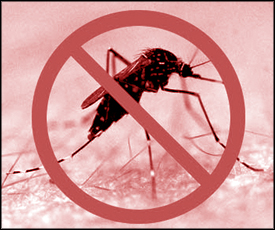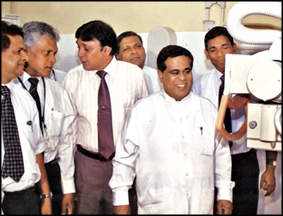|
Health Wise
Listen to your heart , follow its beat
********
'Work with heart', the theme set by the World Heart Federation for
2009, emphasizes on the heart healthiness of the working environment.
Each year, the last Sunday of the month of September is the World Heart
Day. Dr. Ruwan Ekanayake, Consultant Cardiologist, Colombo National
Hospital says primary prevention would be the best solution.
********
by Dhaneshi YATAWARA
|

Dr. Ruwan Ekanayake
Pic: Chinthaka Kumarasinghe
|
Haven't you noticed that we are spending more time in the office and
have we turned our home into a temporary shelter?
The alternated modern day life styles of the earth dwellers are, no
doubt, spent not with the family but in the work place. Except for a
housewife almost all of us spend a larger part of our day in the office,
if not, time is wasted on the roads either travelling to office or
returning from office being stuck in the traffic for hours.
Thus the office environment has become a vital part of a persons'
health, says Dr. Ruwan Ekanayake, Consultant Cardiologist of the Colombo
National Hospital.
"Since the entire world, not just in Sri Lanka, is facing this change
in life styles the World Heart Federation has brought the 'Work with
Heart' concept in to focus. Considering environment factors that affect
heart diseases the work environment must be healthy since we are living
in the office," Doctor Ruwan Ekanayake said.
|

Medicine is not a complete therapy |
As experts emphasize the first and foremost would be a totally smoke
free environment. "Most of the offices are closed environments with the
air conditioning thus the air gets polluted very easily.
It is not just the working environment but the environment in
travelling to and from the office should also be free from smoking," he
added emphasizing on the necessity of cohesive strategy in order to
implement our aims.
"Secondly the focus should be on the canteens. The food served may
not be the simple healthy food in all points of view. There would be
loads of short eats and oil used in cooking may not be the high cost
heart healthy varieties since it is not economical for a business. In
addition plenty of salt is added to make the food tastier.
Thus, we end up with a very unhealthy meal," said Dr. Ekanayake.
According to health experts the oil and fat should only be 10% of a
meal.
" If fruits and nuts can be provided as snacks and provide green
gram, chickpea, cowpea etc can be boiled and served it will be extremely
healthy not just for those with heart problems but for diabetic and
hypertension as well. It doesn't cause gastritis. And therefore menu of
the canteen of the work place should become our focus," he stressed.
Recreation
According to Dr. Ekanayake the space for recreation activities and
exercise during a lunch break or in the free hours would be another plus
point.
"If the employees can be encouraged to use such facilities, provided
in the office environment, instead of wasting the entire lunch hour
eating and chatting it would be healthier," he explained.
Though the modern life style gives little space for a person to relax
it is only the brain that is doing more work than the body. Recreation
and exercises seem to be not in our routines - yet it should not be so.
"Providing such facilities in an office can make exercise and
recreation a part and parcel of their lives," he said - definitely a
practical and positive healthy approach.
Dignity of human being
It never occurs in our mind that respecting the dignity of a human
being could lead to a healthy heart. "Respecting the human beings
working in an office or a factory a person should not be forced with
unreasonable work load or dead lines," he added stressing the fact that
administration and management of a work place must pay attention to
these factors.
"This was proven during a research done based on bus drivers in
London where they were facing tight schedules which were difficult to
maintain. This has shown an increase in heart diseases among these
drivers," he added. In any corner of the world people react in similar
manner and unfortunately records of a local research is not well known
among the professionals.
Yet, the results may not be far different and we ourselves feel the
impact of being overloaded with stress. "Research on Air traffic
controllers in USA has also shown that if they are not provided with
adequate number of assistance staff the instances of myocardiac problems
increases," he added.
Give and take policy
The employees have to put their heart into their work while working -
workers also needs to work in a manner meeting the targets of the
institute as well as taking care of their health, Doctor Ekanayake
explained saying that the worker must work with a dedication and a sense
of vocation.
Doctors have found that smoking, High blood pressure, diabetes
mellitus, family inheritance tendency, obesity, lack of exercises and
high stress levels are the traditional risk factors for ischemic heart
diseases. Yet factors need not be limited to these.
"These traditional risk factors can flourish in a person depending on
the mentality of that person," Doctor explained. The way you take life
and handle day to day chaos is an important point that decides worsening
or making the condition better.
The personality factors also come into play along with the
environment risk factors. "Altering the personal approaches in life is
also important to have a healthy heart.
Generally doctors recommend clinical check ups for heart diseases for
an average person at the age of 40 and for a person with family
inheritance at around 30 years. "But the healthy habit can only be
inculcated in to a person only from childhood. So it is the entire
process of growing up with proper values is what matters," he added.
Relaxation
Relaxation plays a major role in making a condition of a patient
better.
Mind does play a major part.
"The heart and the lung are under neural control. Whenever we become
anxious or stressed the heart beat increases and increases the blood
circulation as well as the respiratory rates. Always there should be a
balance between the parasympathetic and the sympathetic nervous systems
of our body thus the heart and respiratory rates can be lowered," Doctor
Ekanayake explained. According to a research done at the Radcliff
Hospital in UK under the Cardiology Department of the Oxford University
by Professor Peter Sleight it was experimentally proven that the 'ragadari'
and slow classical western music has shown the greatest effect in
lowering heart and respiratory rates to healthy levels. This is
regardless of the music knowledge of a person or their taste.
Proper goals
"The solution lies in setting proper goals in life," said Doctor
Ekanayake.
Stress levels, depression all result due to the over enthusiasm of
achieving goals and the insecurity feeling associated with present day
life style associated with unnecessary consumerism.
The pace of life has become very rapid infested with an unhealthy
competitiveness causing a lot of stress wearing the precious heart.
Medicine is not a complete therapy. "People should know what is worth
sacrificing and what is worth retaining," Dr. Ekanayake stressed.
************
Since the beginning of the century infectious diseases were the
leading causes of death.
In the present day non communicable diseases have become the main
killer. In Sri Lanka 35% of deaths caused due to non communicable
diseases are due to heart diseases.
************
What the community should know and could do:
Dengue in Sri Lanka
by Dr. K. D. P. Jayatilaka
A female Aedes mosquito lays eggs in batches of 20 - 60 at a time on
the wet surface above the water level and in contact with water these
eggs float in singles till the 1st instar larva emerges in 2 -3 days.
The mosquito larva goes through 4 stages of development and feeds on
various organic matters like bacteria, protozoa, algae, etc., present in
water till it turns to the non-feeding stage of the pupa which lasts for
a day or two to finally come out as the adult mosquito.
 The whole process from egg to adult takes 7 - 11 days depending on
the outside temperature. Usually in a batch of eggs there are about 50%
male and 50% female mosquitoes. So, any collection of water which lasts
for more then 7 days is a possible breeding place for Aedes mosquito. The whole process from egg to adult takes 7 - 11 days depending on
the outside temperature. Usually in a batch of eggs there are about 50%
male and 50% female mosquitoes. So, any collection of water which lasts
for more then 7 days is a possible breeding place for Aedes mosquito.
The eggs of Aedes mosquitoe have the property of sticking to the
surface of the container which holds the water or the ground water pool
and could withstand even desiccation up to several months.
It is important to know this property of the Aedes eggs in the
control program as these desiccated eggs lying dormant especially in
dried up ground pools could become viable in coming into contact with
water again.
Hence, it is important to scrub and clean the sides of the
containers, vases, drums, tanks, bird-baths, etc., when emptying and
refilling with water. It is also known that infective female Aedes
mosquito could pass the dengue virus through the eggs to the next
generation. However, this does not have much of an influence in causing
or/and continuing a dengue epidemic.
Breeding sites
The common breeding places of the Aedes mosquito are so varied and
many. We normally speak about discarded plastic cups, coconut shells,
empty bottles, containers used as ant traps in houses, discarded tyres,
tree holes, drums and containers used for collection and store water,
temporary man made pools at building sites, etc., sheaths of some plants
like bromeliad and bananas, etc.. Broken places of roadside drains where
water stagnates, in large masses of water like ponds especially the
edges and small rock pools and animal hoof marks which form to collect
water during the rain are favourite places for the female mosquito to
lay eggs. Fallen leaves like those in teak plantations and even the
pieces of bottles fixed to parapet walls to prevent burglars climbing
can be temporary breeding places during the rainy season. There are also
so many unsuspected places in our garden or surrounding where water
remains for more than 7 days and these could be Aedes mosquito breeding
places.
Dengue control
We in Sri Lanka are fortunate in not having many major problems like
rain water collection receptacles for drinking, except in few areas,
extensive ground water - Aedes breeding places, inaccessible areas
during rain and floods etc., faced by many other countries where dengue
and other mosquito borne diseases are a problem. However, we have few
problems which are manageable, sometimes with difficulty but not
impossible. The unfortunate thing is that a moderate Dengue Epidemic
(caused mainly with D2 & D3) has occurred these days causing many deaths
(about 250) and sensitizing many (20,000 - 50,000) to those dengue
serotype viruses. The problem will arise if another serotype (D1 or D4)
becomes predominant with the next epidemic. This was discussed in my
previous article appeared last month. The only way to prevent this
unfortunate situation is to have a sustainable, community friendly,
community helpful dengue control program with the full participation and
cooperation of the community. The assistance, participation and
cooperation of other parties mentioned below are very essential to apply
all possible and appropriate control measures. Dengue control should be
build into the people's daily life like the grow more food 'Api Wawamu
Rata Nagamu' program which is functioning at different degrees
practically in every house in the country today. Dengue control is not
synonymous with proper garbage management, but proper garbage management
helps tremendously to a successful dengue control program.
The basic principles in a Dengue Control Program should be -
Reduce the breeding places to prevent build up of mosquito (vector)
densities. Reduce the survival rate or the longevity of the mosquito.
Reduce or prevent man vector (mosquito) contact.
Identification and early management
Dengue control is vector control. To prevent Aedes mosquitoes
breeding at different localities and different situations, different
methods have to be applied. Some of these cannot be carried out by the
community alone and neither can it be done by the Ministry of Health
alone, even though it has the responsibility of preventing dengue
epidemics. Some methods or procedures could easily be carried out by
individual house-holders and some by the community in groups. Some need
the assistance of a central organization like the Dengue Control Unit of
the Ministry of Health and even that will have to get the cooperation,
assistance and guidance from other Ministries like Education,
Agriculture, Environment, Local Government, Irrigation, Roads and
Highways, private Organizations like Builders, Architects, etc. and even
private entrepreneurs. In short it is a team work build into the life of
the community. Any person irrespective of the social status in Sri Lanka
could become a dengue patient and even die of the disease. The first
step in the dengue control activity begin at home and that is proper
collection/disposal of household waste and reduction/elimination of
other possible Aedes breeding/resting places. Teaching school children
the basic ideas of dengue control is very important and will go a long
way. Motivate the children at school and let them take the subject to
their homes.
They are the best resource to change the knowledge, attitudes and
practices of elders at home. Or, when the children become adults and
start running their own homes, they will practice what they learned at
school. Mosquitoe breeding and people getting mosquito borne diseases is
a natural thing in any tropical part of the world.
Control measures
Source reduction and cleaning up operations, * Biological control, *
Insecticide spraying (larvicides and adulticides), * Environment
modification and manipulation, * Personal & family protection, etc. *
Get immediate medical assistance in case of suspicion of dengue
complications.
It is very encouraging to note, that so many organizations, non
governmental, government, security forces, media, business, etc., have
come forward with different activities to help to fight the current
dengue epidemic and all these are very useful. The important thing is to
continue them in the same way and make it a part of the people's daily
life. We hear many community education and community mobilization talks
on the TV/radio, see many interesting articles in the newspapers and
leaflets distributed by some organizations on dengue control and that
too is very encouraging.
A common theme everyone talk is of 'destroy' and 'eliminate' Aedes
mosquito breeding places and this is what should be done to reduce the
vector densities. This is easily said than done. Community education is
very essential in the dengue control program but the correct facts in a
way acceptable to the community should be given. Also when problems are
discussed the solutions should be practical
To be continued.
[ Health News]
Latest Digital X-Ray technology now in Sri Lanka
by Nadira GUNATILLEKE
The Healthcare and Nutrition Ministry introduced high tech `Digital
X-Ray Technology' to Sri Lankan State hospitals last week at a cost of
Rs. 150 million. This is the first time this technology is available in
Sri Lanka.
|

Healthcare and Nutrition Minister Nimal Siripala de Silva
inspects the new digital X-ray machine while the Ministry
officials look on. |
The new technology was launched at Ragama Teaching Hospital and
Welisara Chest Hospital. The value of one unit is Rs.75 million and both
units cost Rs. 150 million.
At the moment ordinary X-ray technology is being used in Sri Lanka
with the help of films.
It is very difficult to use this technology because X-ray images with
high resolutions cannot be taken using this old technology.
The side effects of this technology are also very high.
But the latest high tech new technology, `Digital X-Ray' does not
need films and the side effects are also minimum.
The radiation is minimal and image zooming can be done. It is also
possible to store data and images for future use.
The data and images can be sent very quickly and easily to another
hospital via Internet when the patient need to be transferred to another
hospital for further treatment.
The machines can be operated using remote control.
The Sri Lankan public can now enjoy this latest new technology free
of charge.
The Ministry will introduce more latest high tech medical equipment
and new International level technology for all the other State hospitals
under its `State hospitals upgrading project' to be launched in 2010 at
a cost of Rs. 2,875 million. |

